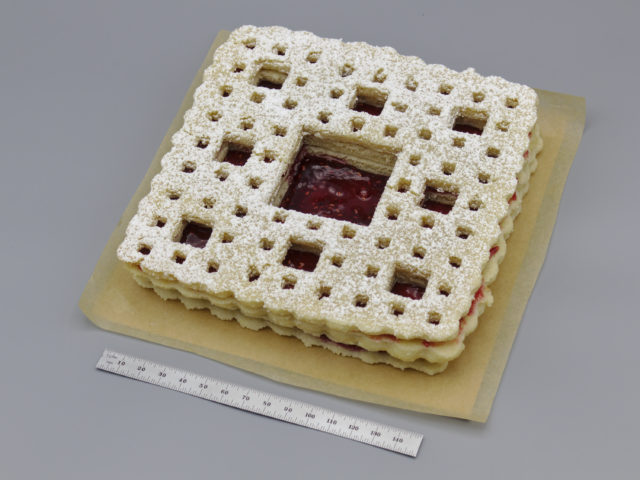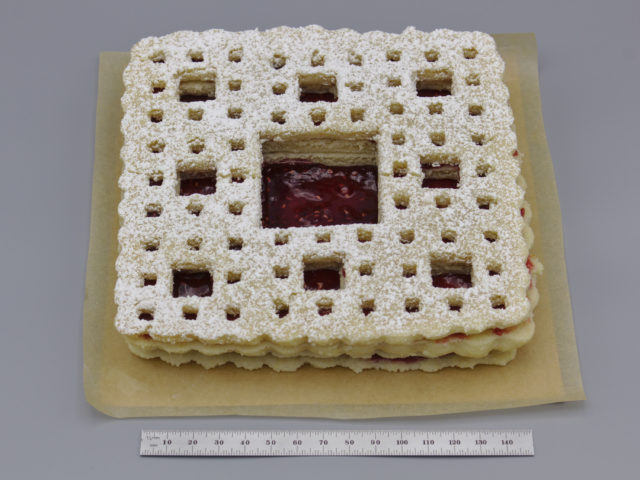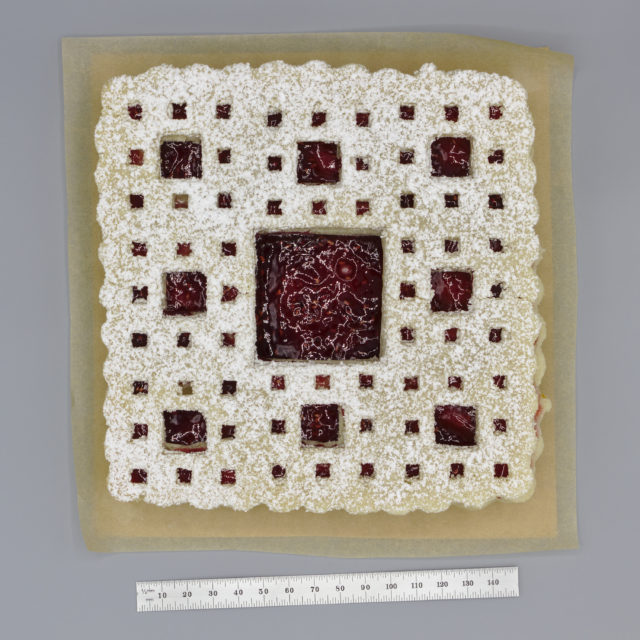As a follow-up to my previous entries for the Ashley Book of Knots and Space-Filling Curves, I decided to enter a submission into this year’s Johns Hopkins University Sheridan Libraries’ (virtual) Edible Book Festival contest for Mandelbrot’s The Fractal Geometry of Nature. This raises the questions of which fractal to use and how to make it edible. To this end, I decided to bake a Sierpiński carpet Linzer cookie. The zeroth iteration of the fractal, a square, forms the first layer of the cookie, while the first three iterations of the fractal form three additional layers, for four cookie layers in total.
In order to create the 15 cm square cookie, I designed and 3D printed a set of cookie cutters out of PLA plastic.1 These consisted of a wavy-edged square for the border of all the layers, a smaller square for the center of the three fractal layers, an even smaller square for second fractal iteration layer, and the smaller square with eight tiny squares around it for the final iteration layer. This set of cutters was a compromise between having a separate, complete cutter for each layer—which would have required more print time and material—and only making one cutter per size of cutout—which would be more difficult to align and use.
An existing Linzer cookie recipe was used for creating the cookie.2 After preparing the dough and using the cookie cutters, the cut dough was placed in the freezer for a few minutes to cool to make it easier to transfer the large cookie layers to the baking sheet. The cookie layers were then baked. Since dough expands when baked—and baking is not great for maintaining dimensional tolerances in general—the cookie cutters were used again on the cookie layers’ internal cutouts as soon as the layers were removed from the oven. The baked cookie layers were then placed in the freezer and frozen to make them more durable and easier to handle.3 Once frozen, the layers were removed, and the edges of the cutouts were cleaned up with a knife and, in the case of the tiny squares on the final layer, a paperclip. The final layer was then dusted with powdered sugar, and the layers were assembled into the final cookie using raspberry jelly between the layers.
For a different take on Sierpiński carpet cookies, see Evil Mad Scientist Laboratories’ 2008 blog post on the subject.
I have uploaded the cookie cutter designs. ↩
The recipe is for 20 three-inch cookies, which was just enough for one, large Sierpiński carpet cookie. ↩
I still managed to crack the final layer in half, but the damage is not particularly noticeable under the powdered sugar. ↩




Pingback: Matthew Petroff Baked Sierpiński Carpet Linzer Cookies « Adafruit Industries – Makers, hackers, artists, designers and engineers!